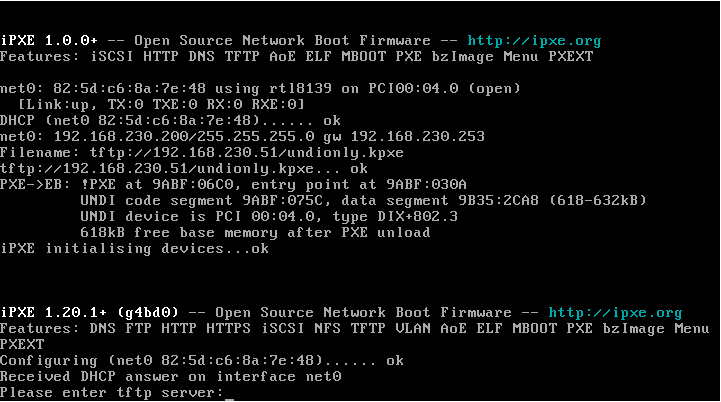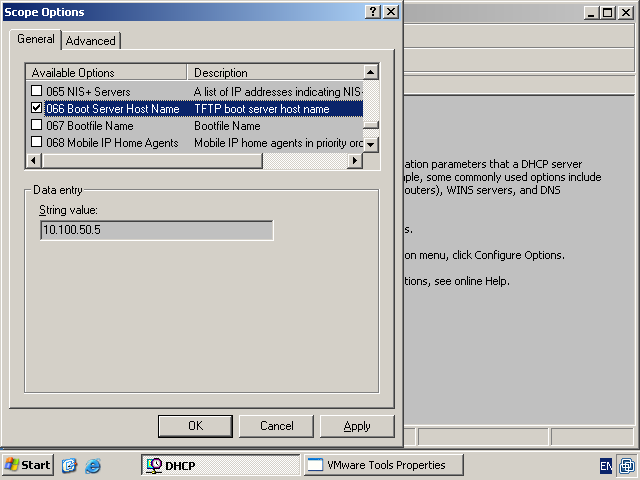

Clear the current DHCP bindings to make sure the phone will grab the correct address:.Router#copy running-config startup-config Make sure to copy the running configuration to startup configuration:.BOOTP is an IP protocol that informs a computer of its IP address.
#Dhcpd tftpserver option install#
Enter the name of the DHCP pool as follows: Here are a few screen shots which demonstrate some of these additional option choices: After a vanilla install of DHCP role, open the DHCP console: After right-clicking on Server Options: After selecting Configure Options: As an example, from this list I want to select a DNS server, so I choose option 6 and enter 4.2.2. You need to set up a TFTP server, and for many machines a DHCP server, or BOOTP server.Login to router and enter configuration terminal mode:.(I recommend exporting the configuration file to a local workstation and manually editting if there are more than a couple edits to make.) Now you will need to right click Scope Options under your scope and choose Configure Scope Options, Scroll down until your see option 150 and check the box, and finally enter in the IP address (es) of your TFTP server (s) and you should be good to go. Something to remember is that each reservation is treated as its own DHCP pool by the router. Once done, OK through the Predefined Options windows until you are back at DHCP Manager.
#Dhcpd tftpserver option series#
#Dhcpd tftpserver option how to#
So here is how to configure the Windows Server DHCP Option 66 Reservation Found that this could be done via DHCP reservation on either their Windows Server 2012 R2 Standard or on their Cisco 871w router, but I am sure their are ways to do it on other vendors equipment (which is outside the scope of this article).

(Option 66 is part of IETF RFC 2132 which states that this option uses FQDN or IP address to point to a TFTP server.) In this particular setup only one VoIP phone vendor at a time could be specified in the option 66, so custom settings were going to be needed to make all the other vendors phones work properly. Recently ran into an issue where a company wanted to use multiple types of VoIP phones that required seperate settings to download their configuration with a vendor – this is usually done in a homogeneous environment via DHCP option 66 settings.


 0 kommentar(er)
0 kommentar(er)
